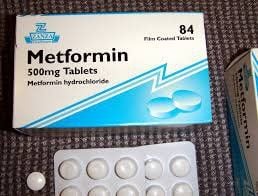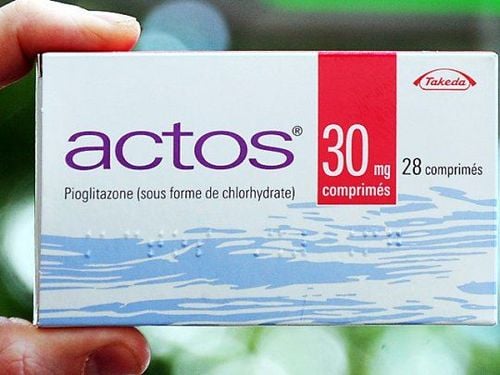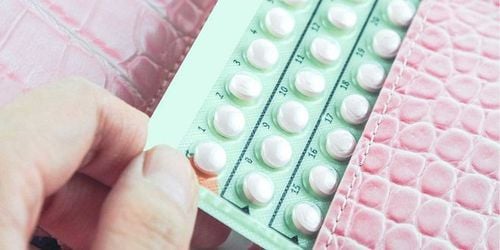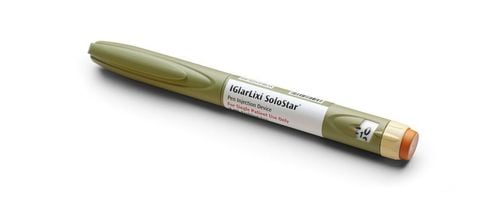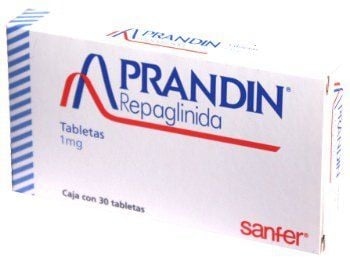This is an automatically translated article.
Glimvaz 2 is used as an adjunct to diet and exercise, to reduce serum glucose levels in patients with non-insulin-dependent diabetes mellitus, where hyperglycemia cannot occur. controllable. In the article below, you will learn about the uses of Glimvaz 2 and the most important information.1. What is Glimvaz 2?
Glimvaz 2 is a drug manufactured by TP Dexa Media Company - Indonesia with the main ingredient Glimepiride.
Pharmaceutical name: Glimvaz 2. Drug group: Belongs to the group of hormones, hormones. Dosage form: 2mg tablets. Packing: Packed in a box of 5 blisters, each blister of 10 tablets. Ingredients: Glimepiride.
2. What does Glimvaz 2 do?
Glimvaz 2 is indicated for combination treatment with diet and exercise. To control blood glucose levels in non-insulin dependent type 2 diabetic patients whose hyperglycemia cannot be controlled by exercise or diet alone.
It is necessary to adhere to the use of drugs according to the instructions of the doctor, pharmacist or manufacturer (use and function for whom).
3. Dosage and how to use Glimvaz 2
3.1. Dosage For adults:
Use the starting dose for people who have not been treated before is 1-2mg/day. For patients with weakness, malnutrition, the elderly, patients with liver failure, kidney failure or those at risk of hypoglycemia: Use 1mg/day. For patients who have been treated with other antidiabetic drugs: Use 1-2mg/day and the maximum dose is 2mg/day. Maintenance dose: Use 1 - 4 mg/day (for patients already taking glimepiride 1 mg/day, then increase to 2 mg/day if the desired glucose level is still not achieved after about 1-2 weeks of treatment). When using up to a dose of 2mg, the dose adjustment will then depend on the level of tolerance and response of the patient), the dose should be adjusted gradually, each increment should not exceed 2mg/day, the dose should be increased gradually. from 1-2 weeks, the maximum dose is 8mg/day.
3.2. Dosage The drug is prepared in the form of tablets, taken orally, should be taken once a day with breakfast or the first main meal of the day with a full glass of water.
3.3. Overdose and treatment If overdosed, the patient may experience hypoglycemia, which lasts from 12 to 72 hours, and may recur after the first recovery period. These symptoms may disappear after 24 hours of taking the drug.
Nausea or vomiting, pain in the epigastrium may occur. Hypoglycaemia is also accompanied by neurological symptoms such as tremors, visual disturbances, feelings of restlessness or problems with coordination, fatigue, drowsiness, coma, and convulsions.
4. Notes when using Glimvaz 2
4.1. Contraindications Do not use Glimepiride in the following cases:
Patients with allergy or hypersensitivity to sulfonylureas, glimepiride, sulfonamides or any of the ingredients in the drug. Patients with insulin-dependent diabetes, coma or diabetic keto-acidosis. Patients with liver failure, severe renal failure (should switch to insulin). Women who are pregnant or breastfeeding mothers. 4.2. Side effects Some of the side effects that may occur when using Glimepiride are:
Gastrointestinal reactions: Nausea, gastrointestinal pain, diarrhea have been reported (<1%). Allergic skin reactions such as: erythema, itching, urticaria, measles-like rash and maculopapular rash. Changes in accommodation, blurred vision, and difficulty in vision may occur with the use of glimepiride (placebo 0.7% and glimepiride 0.4%). Hematological reactions: Leukopenia, thrombocytopenia, agranulocytosis, hemolytic anemia, pancytopenia, aplastic anemia. These adverse reactions are usually temporary and disappear afterward, even though the patient continues to take glimepiride. In case the above hypersensitivity reactions persist for a long time, the patient should stop taking the drug and contact a specialist immediately. 4.3. Drug Interactions When co-administered with insulin, coumarin derivatives, oral antidiabetic drugs, chloramphenicol, phenylbutazol, -blockers, MAOIs, miconazole may increase the hypoglycemic effect of glimepiride. Diuretics, acetazolamide, phenytoin, glucagons, barbiturates may decrease the effect of glimepiride. Clonidine, reserpine, H2-antihistamines, or alcohol may alter the effects of glimepiride. Glimepiride has the potential to alter the effects of coumarin anticoagulants. 4.4. Precautions: Glimepiride should not be used by women who are breast-feeding or pregnant. Particular attention should be paid to the risk of hypoglycaemia or loss of glycemic control. Loss of glycemic control can occur in patients who are stabilized on a diabetes regimen, but who still have stressors such as trauma, infection, fever, or surgery. . There have been many reports of allergic reactions in patients treated with Glimepiride such as angioedema, hypersensitivity, Stevens-Johnson syndrome. There have been many documented reports of hemolytic anemia in patients with or without glucose 6-phosphate dehydrogenase (G6DP) deficiency. The increased risk of cardiovascular disease should be avoided with all sulfonylureas. An increased cardiovascular risk has been reported with oral glucose-lowering drugs compared with diet alone or diet in combination with insulin. In the case of low or high blood glucose, visual impairment has the ability to reduce the patient's ability to concentrate and react. Therefore, special care should be taken when using the drug for people who have to drive, operate machinery or perform jobs that require high concentration and accuracy. Glimepiride should not be used in patients with rare hereditary problems of galactose intolerance, glucose-galactose malabsorption or total lactase deficiency. The article has provided you with the most useful information about Glimvaz 2's ingredients, uses and important notes. However, to ensure the safety and effectiveness of the drug, patients should still use it only when prescribed and guided by a doctor.




